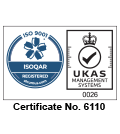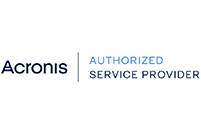Digital transformation has had a considerable impact on the corporate world in recent years, creating new opportunities for both startup companies and established firms alike. As technology continues to become an ever-increasing aspect of our daily lives, the devices and systems we use also develop. Technology is changing at a phenomenal rate, which is leading to significant changes in our daily lives, and affecting business at the same time.
In this blog post, we will take a closer look at IT transformation, and assess how this concept is playing an increasingly key role for business IT departments.
What is IT transformation?
IT transformation takes form as a complete overhaul of an business’s IT systems, and can involve changes to network architecture, hardware, software and data storage. Like any large-scale change taking place within an organisation, IT transformation has the potential to impact workflow, automation programmes and the corporate culture.
The objective of IT transformation is to change the essence of any IT department, making it less reactive and inflexible. The ideal ‘transformed’ IT department would respond quickly to changing business requirements.
This concept enables enterprises to reinvent and digitally transform their business to meet new challenges proposed by the increasing use of technology.
The idea of IT transformation is that, as businesses begin to evolve digitally, control over key systems and areas must be moved beyond humans, instead allowing software to run these aspects of the business.
But how does this relate specifically to businesses?
The applications that are being developed to control aspects of the business are becoming increasingly complex. However, it is essential that these are simplified to allow companies to operate them with ease. As a result, many tech giants - including Dell - are promoting efficiency, predictability and agility within new products to provide services in real time that customers are demanding.
Enabling IT transformation through the cloud
One of the most effective ways for driving IT transformation is by adopting a cloud model, which allows businesses to achieve that increased efficiency, predictability and agility.
The building blocks of successful cloud operations are as follows:
1) Hardware
Although the future of IT is, and will be, increasingly software-centric, it has to run on hardware that can deliver the performance and scalability that is necessary.
2) Virtualisation
This helps to abstract the physical components of an infrastructure and turns into a virtualised infrastructure that can be presented to applications as services.
3) Orchestration
This answers the question ‘how do I automate the delivery of these infrastructure services in self-service fashion?’
4) Platform
This provides the link and methodology that isolates cloud-based applications from the underlying infrastructure and automation for maximum resiliency and reliability.
Business applications then operate on top of these blocks.
IT transformation across the business
While adopting a cloud model is an effective way of moving closer to IT transformation, it requires additional work and initiatives across the business as a whole.
Although ownership and implementation of digital transformation can be inconsistent between businesses, responsibility for it usually lies with the chief information officer. Despite this, the IT department is not always the most likely to lead the implementation of digital projects within a business. These are usually conducted by individual business units or digital divisions.
Many executives, both in IT and across other departments, agree that IT departments should take an active role in transformation, particularly when it comes to driving innovation. So, how is this achieved?
- Adopting new technologies
To drive an organisation forward, the business needs to know about any new technologies that are on the horizon. Including if and how they can help to transform the business as a whole. One example of IT driving early adoption of technology is through automation, which can dramatically reduce costs and free up revenue for reinvestment in technology.
- Drive digital leadership
Many executives believe that a lack of digital leadership is a key barrier when it comes to improving customer experience through digital transformation. It is the responsibility of organisations to ensure digital leaders are cultivated across the workforce, particularly in marketing and IT. This will allow the brand to evolve as the world migrates to a digital mindset and consumers become increasingly tech savvy.
IT departments can drive businesses forward by harnessing the power of emerging technologies to assist key members of some departments in understanding how to transform data into plans to improve business performance.
- Collaborate between departments
There is a need for collaboration with other customer-facing teams within the business. In fact, marketing and customer service personnel are already taking on leadership roles within digital transformation projects alongside IT by expanding their technical knowledge and using it to assist with their strategic plans while using data trends to improve customer interaction.
- Invest in talent
Access to the right expertise, in addition to hiring the right people at the right time, is becoming a huge competitive advantage for businesses.Those businesses pursuing digital transformation initiatives are set to increase their workforces in the future, and focusing new hires on digital initiatives such as mobile app development, analytics and design.
IT transformation provides companies with the opportunity to significantly improve the effectiveness of their IT infrastructure, but due to the complexity of a transformation project of this kind, the necessary preparation and investment is often avoided. Make sure you understand how best to prepare and implement a project like this and your company can reap the rewards.







